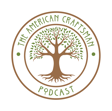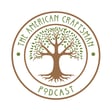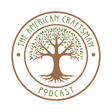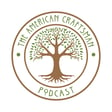
The American Craftsman Podcast Ep. 20 | Technical Difficulties
On Episode 20 of The American Craftsman Podcast, hosted by Greene Street Joinery, we talk about milling methodology and our choice of finish.
Beer of the Week (Pipeworks Brewing Company 'Any Other Name'): https://untappd.com/b/pipeworks-brewing-company-any-other-name/2242379
Tool of the Week: (Sand Flex Sanding Blocks) https://www.amazon.com/gp/product/B000GACU1Q/ref=as_li_tl?ie=UTF8&tag=greenestreetj-20&camp=1789&creative=9325&linkCode=as2&creativeASIN=B000GACU1Q&linkId=860dca01bc7aec2752f9969d8cce9485
Greene Street Joinery is a custom design & build shop located in Monmouth County, New Jersey. We build multigenerational furniture with an eco-friendly and sustainable mindset.
Inspired and guided by the ideals of the Arts and Crafts movement, we believe in the use of traditional craftsmanship and simple, well-proportioned forms; sustainability and ethical practices; and importantly, taking pleasure in our work as craftsmen to create quality pieces of enduring value.
Follow us!
Instagram: https://www.instagram.com/greene_st_joinery Facebook: https://www.facebook.com/greenestreetjoinery
Support us on Patreon!
https://www.patreon.com/Greene_st_joinery
Visit Us at https://www.greenestreetjoinery.com/
And be sure to Subscribe to our channel for more videos like this one!
Support this podcast at — https://redcircle.com/the-american-craftsman-podcast/donations
Advertising Inquiries: https://redcircle.com/brands



